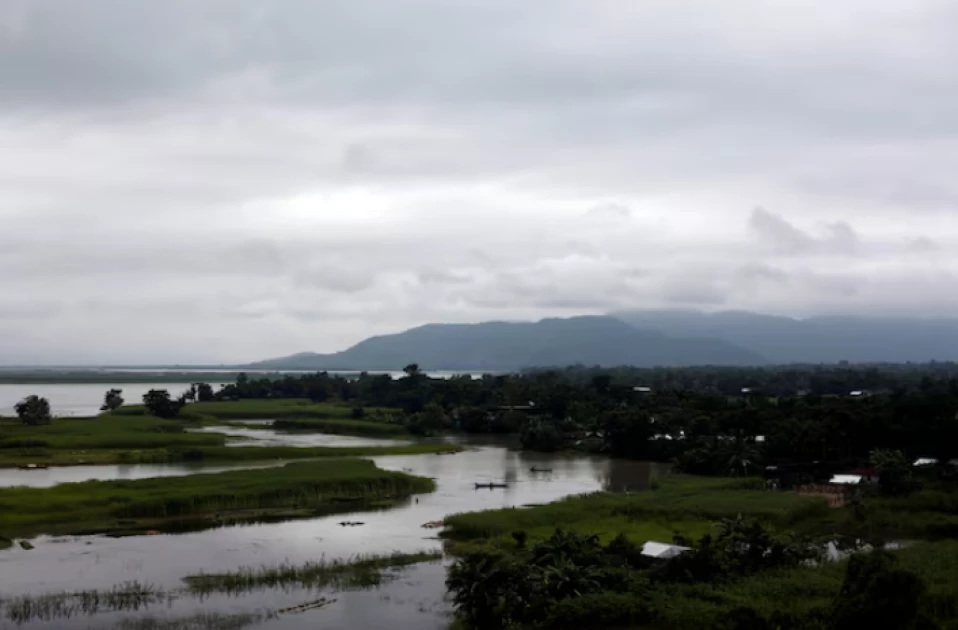China has officially begun construction on what is expected to become the world’s largest hydropower project — a $170 billion mega-dam along the Yarlung Zangbo River in Tibet. The project, once completed, is set to produce more electricity annually than the entire United Kingdom consumes. This development, hailed by China as a major step toward clean energy and economic stimulus, has triggered fresh concerns among its downstream neighbors — particularly India and Bangladesh — who depend heavily on the river’s flow.
Premier Li Qiang unveiled the project over the weekend, prompting a surge in Chinese construction and engineering stocks. For China, this project represents a leap in infrastructure, green energy, and regional influence. However, for countries downstream, it revives deep-seated fears of water insecurity and geopolitical tensions.
The new hydropower project will feature five dams built along a 50-kilometer stretch of the river where it descends 2,000 meters from the Tibetan Plateau. First power generation is expected in the early-to-mid 2030s, but so far, China has released limited technical or environmental information about the massive undertaking.
The Yarlung Zangbo River becomes the Brahmaputra as it flows into India and then Bangladesh, serving as a critical water source for agriculture, drinking, and energy production for millions of people.
Leaders in India’s northeastern state of Arunachal Pradesh — which borders China — have warned that the dam could significantly reduce water flow, drying up as much as 80% of the river in that region. Downstream regions like Assam could also face flooding due to sudden water releases.
Additionally, experts like Professor Michael Steckler of Columbia University caution that the dam will likely trap essential sediment needed to enrich farmlands downstream, impacting agricultural productivity.
India and China have a history of strained relations in the region, including a border war in the 1960s. Experts such as Sayanangshu Modak, a researcher on transboundary water issues at the University of Arizona, note that the lack of transparency from Beijing raises concerns about potential weaponization of water resources in future conflicts.
“Speculation grows when there is silence. People fear China could use this dam to restrict water during a crisis,” Modak said.
In a statement on Tuesday, China’s foreign ministry emphasized that the project falls under its sovereign jurisdiction. “This project will provide clean energy and assist in flood prevention,” the ministry said, adding that China has communicated with downstream countries on matters of hydrology, flood control, and disaster mitigation.
India’s foreign and water ministries did not immediately respond to media inquiries.
Despite the concerns, Modak also pointed out that the majority of the Brahmaputra’s water comes from monsoon rains in India and Bangladesh, not from China. He noted that China’s proposed design appears to be a “run-of-the-river” project, which means water is not stored or diverted, and continues to flow downstream.
India itself has also proposed its own dams along the river, including an 11.5-gigawatt facility in Arunachal Pradesh that would become the largest in the country.
“These projects are partly a way for India to establish usage rights on the river,” Modak said. “If India can show historical use, it strengthens its case in any future dispute.”
Water disputes involving large dams are nothing new. India and Pakistan have long argued over water sharing under the Indus Waters Treaty. Egypt and Ethiopia are locked in a diplomatic standoff over Ethiopia’s Grand Renaissance Dam on the Nile River. In all these cases, mega-dams become not just infrastructure projects but powerful geopolitical tools.
The Chinese dam will be built in an area prone to earthquakes, landslides, and extreme weather. Earlier this year, a major earthquake in Tibet raised serious questions about the safety of infrastructure in such volatile zones. Even smaller projects nearby have faced construction limits due to harsh winters and engineering difficulties at high altitudes.
While China’s mega-dam promises massive energy output and economic stimulus, its implications for regional stability, environmental safety, and water security remain complex and contentious. For countries downstream like India and Bangladesh, the stakes are high, and the need for transparency, diplomacy, and regional cooperation has never been more urgent.



